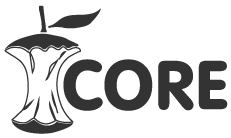What have we produced:
Software tools
- CORE harvesting admin interface (http://core-project.kmi.open.ac.uk/node/9 – access to the admin system is not public)
- CORE Portal (http://core.kmi.open.ac.uk) – A general purpose federated search system for accessing articles harvested from OA repositories.
- CORE Mobile (https://market.android.com/details?id=org.xmlrpc&feature=search_result) – A native Android application, which can be used on both mobile and tablet devices. The application allows search and navigation across related papers stored in OA repositories and downloading full-text articles on the mobile device.
- CORE Plugin – It provides information to digital libraries about related documents stored in other repositories that are semantically related to the document currently being visited. Integrated into Open Research Online (oro.open.ac.uk – currently in the process of an internal OU approval).
- SPARQL endpoint (http://core.kmi.open.ac.uk:8081/COREWeb/squery) and RDF triple store (http://ckan.net/package/core)
Publication:
Knoth, P., Robotka, V. and Zdrahal, Z. (2011) Connecting Repositories in the Open Access Domain using Text Mining and Semantic Data, International Conference on Theory and Practice of Digital Libraries 2011 (TPDL 2011), Berlin, Germany
Poster presentation:
Knoth, P. and Zdrahal, Z. (2011) CORE: Connecting Repositories in the Open Access Domain, CERN workshop on Innovations in Scholarly Communication (OAI7), Geneva, Switzerland
Youtube video presentation:
Linked Data in Libraries event (London) presentation:
Core presentation from petrknoth
Next steps:
Find ways how to further develop CORE to enable the inclusion of larger amounts of content, i.e. the aggregation of content from more repositories. Integration of CORE with currently emerging Research Data management and repository systems to allow the linking of publications with data. Further dissemination of the service to increase its adoptionEvidence of Reuse:
- Data and services currently being reused by the Open Research Online Repository.
- Positive feedback received from the participants the OAI7 workshop, namely Astrid van Wesenbeeck (SPARC Europe).
- A positive feedback about CORE received by email as a reaction on the upload of the CORE video on YouTube from Graham Steel.
- Our team has discovered a set of OAI-PMH base URLs that were not up to date in the OpenDOAR repository and provided this feedback to OpenDOAR. Bill Hubbard of OpenDOAR appreciated this collaboration.
Skills:
The project has helped us to further develop skills needed to technically handle large amounts of data. It also increased our understanding of the current state-of-the-art technologies for access and retrieval of Open Access content. These skills will help us to further develop CORE in the future.
